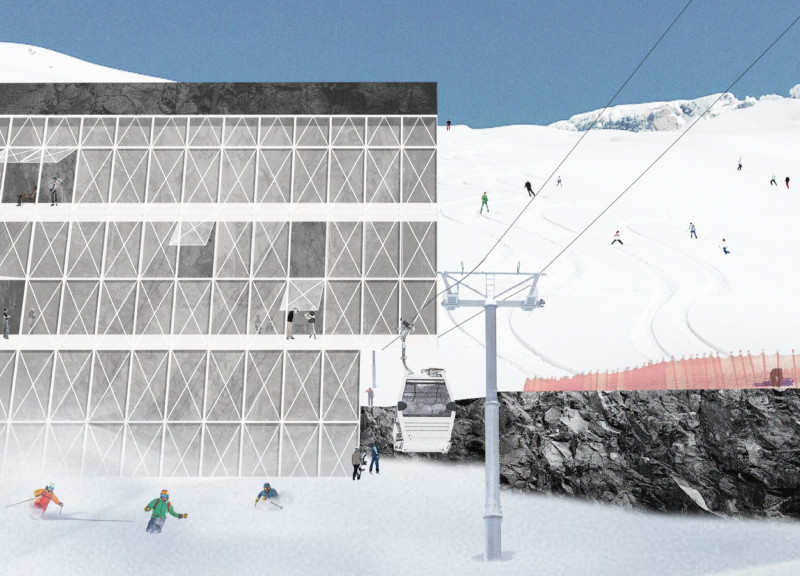5 key facts about this project
At the heart of the architectural design is the concept of connectivity, both visually and functionally. The layout emphasizes open, flexible spaces that adapt to various uses throughout the day. Large, strategically placed windows allow natural light to permeate the interiors, reducing reliance on artificial lighting and enhancing the overall well-being of the inhabitants. The design prioritizes a sense of openness, with interconnected living areas that flow into each other, promoting social interaction and a sense of community.
From a materiality standpoint, the project utilizes a palette that reflects both durability and aesthetic appeal. The primary materials used include exposed concrete, which serves as the foundational element, conveying a sense of strength and permanence. Complementing this, warm timber accents are incorporated to soften the overall appearance and add warmth to communal and private spaces. Glass plays a crucial role as well, facilitating transparency and visual connections with the outside environment while allowing for passive solar heating, which contributes to the building's energy efficiency.
Key features of the design include green terraces that provide residents with private outdoor spaces, promoting a connection with nature amidst urban life. These terraces are not only visually appealing but also enhance the ecological footprint of the project by contributing to urban biodiversity. The integration of planting and greenery serves a dual purpose: aesthetics and environmental responsibility, reflecting a contemporary approach to urban design. Rain gardens and permeable surfaces dot the landscape around the building, further emphasizing the project’s environmental considerations, effectively managing stormwater and promoting sustainable practices.
Unique design approaches are evident throughout the project. The architecture carefully navigates the challenges of site constraints, making effective use of vertical space. The façade treatment, consisting of varied textures and materials, is designed to break the monotony typically associated with residential blocks, allowing the building to stand out while still remaining respectful of the surrounding architecture. The building's geometry is intentionally manipulated to create optimal access to views and sunlight, examples of thoughtful architectural strategy.
Moreover, the integration of technology within the design enhances not only the performance of the building but also the quality of life for its residents. Smart home features are seamlessly incorporated, allowing for energy management and security improvements while maintaining user-friendly interfaces. This responsiveness to modern needs integrates well with the overall design philosophy, demonstrating a foresight that aligns with the evolving expectations of contemporary living.
In summary, the architecture of this project is rooted in a deep understanding of its geographical and cultural context. The design embodies a balance between innovation and tradition, creating spaces that are functional and inviting while addressing environmental concerns. Each element of the project has been meticulously considered, from materials to spatial arrangements, all contributing collectively to a cohesive living environment.
For those interested in exploring the nuances of this architectural endeavor further, it is encouraged to review the architectural plans, sections, designs, and the broader architectural ideas at play here. This deep dive will reveal the thought processes behind the design and how they manifest in the final outcome, offering a comprehensive understanding of this significant architectural project.


























